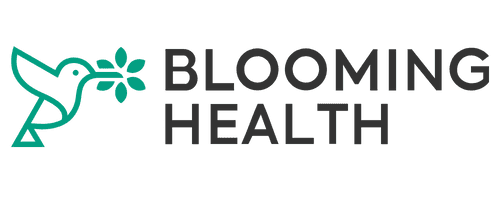Aug 22, 2025
Blooming Day Ohio 2025 brought together a coalition of change-makers across health, government, and social care to chart a path toward more connected and responsive care systems. Hosted by Blooming Health, the event was designed to create a space where local leaders and national experts could share solutions, and frustrations, about the real-world challenges in supporting aging populations.
The second session of the day, The Aging Equation: National to Local, focused on what it takes to build aging-friendly systems that truly support older adults and their caregivers. The panel was guided by Duana Patton, CEO of the Ohio District 5 Area Agency on Aging and President of the USAging Board of Directors, and featured two leaders with decades of experience in the field: Dr. Douglas Beach, CEO of the Western Reserve Area Agency on Aging, and Abby Morgan, President and CEO of Direction Home Akron Canton.
A Growing Aging Population and Its Implications
The session opened with a clear reality check: America is aging, and fast.
“Nationally, 17%, or 55.6 million Americans, were 65 or older according to the 2020 Census,” said Patton. “That’s with an estimated 10,000 people turning 65 every day. By 2040, one in five Americans will be 65 or older.”
In Ohio, the numbers are already above the national average, with 18.8% of the population aged 65 and older. These stats are more than figures, they’re indicators of shifting demand for housing, caregiving, and coordinated community support.
And the message was clear: Older adults overwhelmingly want to remain at home.
Area Agencies on Aging: From Meals to Housing Innovation
Area Agencies on Aging (AAAs) have played a central role in enabling people to age in place, safely and with dignity. But their work goes far beyond meal deliveries and wellness calls.
“We found that housing itself was the barrier to aging in place,” said Patton. “So our board said, ‘What are we going to do about it?’ And we started building affordable housing.”
Morgan echoed that spirit of innovation, sharing how her agency used community needs assessments to respond creatively to unexpected gaps.
“In some areas, 60% of respondents said they didn’t interact with anyone from a different generation,” Morgan noted. “So we created a Diner Club with locally owned restaurants where older adults could gather, use flexible meal cards, and engage socially. We’re meeting nutrition goals and reducing isolation—without forcing a cookie-cutter approach.”
Aligning with Healthcare: From Discharge to Home
As the healthcare system shifts from volume to value-based care, opportunities for collaboration between AAAs and health systems have grown.
Morgan described a successful partnership with Summa Health that started with a simple conversation. “We placed nurse assessors in hospital rooms before discharge. We asked patients, ‘Do you need help at home?’ That led to post-acute interventions that cut 30-day readmissions by 24%.”
This success paved the way for payer partnerships. “Now, we’re doing it for Medicare Advantage and commercial populations too,” she said.
Beach added, “We may take different paths, some agencies build housing, some focus on home modifications, but we all share the goal of helping people remain in their communities as long as possible.”
Cross-Sector Social Care Partnerships
Throughout the session, the panelists emphasized that solving complex problems requires unlikely alliances.
“I reject the idea that we’re coordination-poor,” said Morgan. “Big problems require big partnerships. And that means bringing healthcare, government, and community providers to the same table.”
Patton closed with a call to action: “Whether it’s tech startups, payers, or local elected officials, we need everyone. Let’s build systems that reflect the reality of aging in America today.”
How Blooming Health Supports This Work
The conversations in this session made one thing clear: coordination only works when systems talk to each other and when people stay at the center of the process.
That’s exactly where Blooming Health comes in.
Our platform helps Area Agencies on Aging, healthcare providers, and community-based organizations streamline outreach, automate care coordination, and close the loop on referrals,all while respecting member preferences and reducing administrative burden.
From real-time needs detection to multilingual engagement across voice, text, and email, we help organizations scale their impact without scaling their teams. And our integrations with EHRs and Medicaid systems ensure data flows where it needs to, so people don’t have to answer the same six questions, six times.
Speak with us to see first-hand how Blooming Health supports AAAs. Or check out our case studies.








